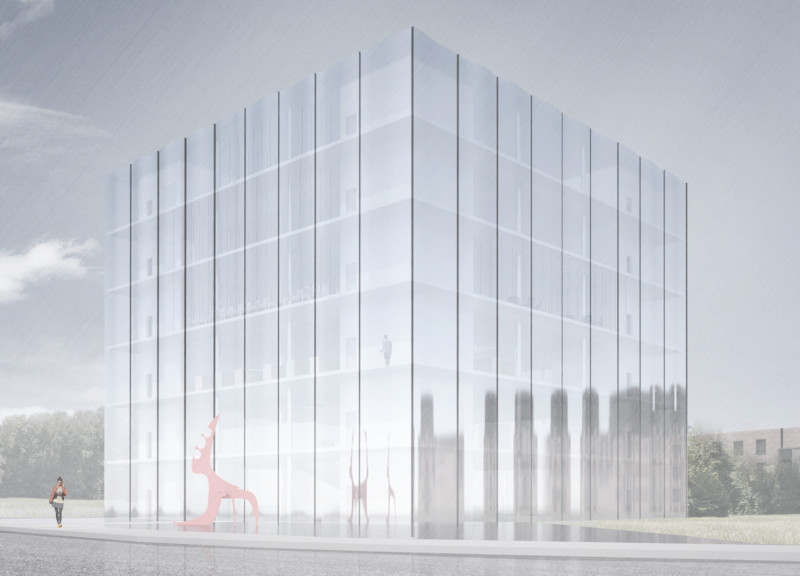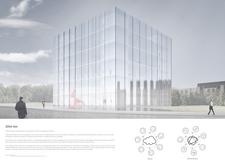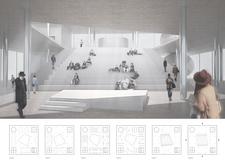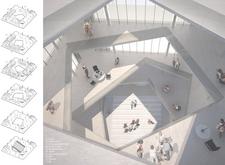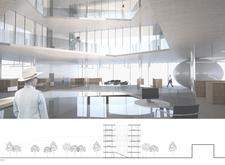5 key facts about this project
## Project Overview
Located in London, the Silver Box serves as an Internet museum that merges architectural design with cultural and technological narratives. The concept is based on the juxtaposition of the structured form of the building and the inherent chaos of the digital realm, aiming to create a space that both educates and engages the public in ongoing dialogues about technology's role in society.
### Exterior Design
The exterior features a predominantly glass façade, symbolizing openness and fostering a connection between the building and its surroundings. This cube-like structure, characterized by sharp edges, positions the museum as a contemporary fixture within the city's historical context. A prominent red sculpture at the entrance provides a contrasting artistic element, adding a visual focal point that reflects the creativity stemming from the digital age.
### Interior Configuration
Inside, the museum is designed to enhance visitor interaction and exploration. A central atrium with spiraling stairs connects various levels, inviting movement and social engagement, akin to environments of online communities. The material palette primarily includes polished concrete and glass, offering a minimalist aesthetic that underscores the museum's function. Versatile spaces such as classrooms, meeting rooms, and exhibition areas ensure adaptability for various activities and events, mirroring the complexity of digital platforms.
### Design Functionality
The museum's layout facilitates intuitive navigation, enhancing the visitor experience and promoting connectivity across different areas. The lower levels are dedicated to exhibitions that explore facets of digital culture, while the upper levels accommodate educational programs. This deliberate design fosters an understanding of the digital age while encouraging community engagement and knowledge exchange.
### Sustainability Considerations
The building's glass façade may incorporate energy-efficient glazing technologies, which contribute to sustainability goals by reducing energy consumption and maximizing natural light. These features align with contemporary architectural practices aimed at reducing environmental impact while enhancing the building's functional and aesthetic qualities.


